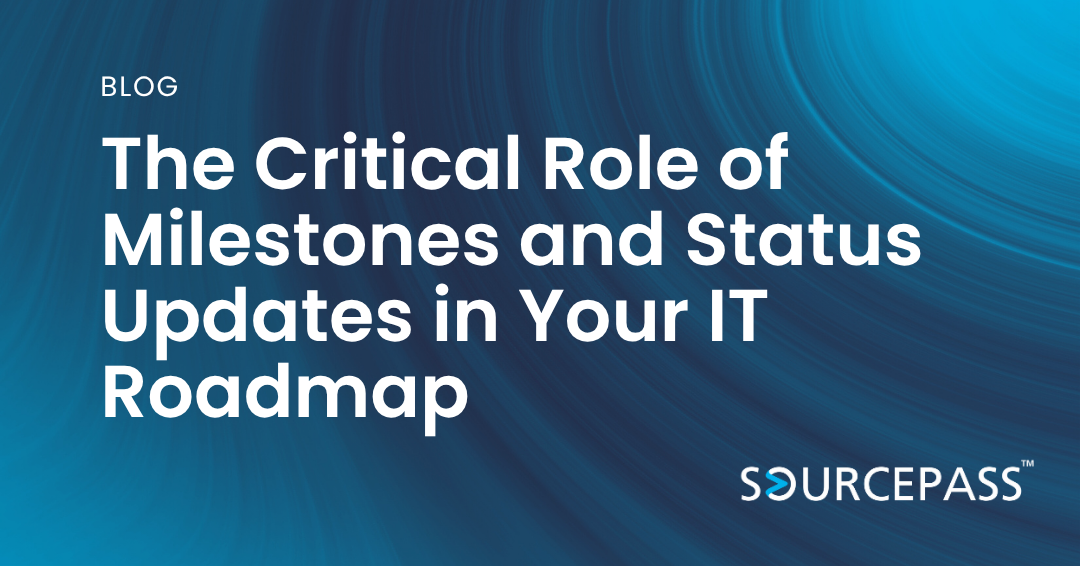The Critical Role of Milestones and Status Updates in Your IT Roadmap
Jul 17, 2025 Alex Davis Strategy & Modernization 2 min read



The Critical Role of Milestones and Status Updates in Your IT Roadmap
Building an IT roadmap is a major step toward aligning your technology investments with your business goals. But creating a plan is only half the battle — how you execute and track that plan is just as important.
That’s where milestones and status updates come in.
Milestones and regular updates provide the governance, accountability, and visibility necessary to keep your roadmap moving forward — and ensure that your business actually achieves the results you’re aiming for.
Here’s why they’re so critical to your success.
1. Governance: Keeping the Roadmap on Track
Without clear checkpoints, even the best-laid plans can drift off course.
Milestones act as formal checkpoints that structure your IT initiatives over time. They create natural decision points where leadership can:
- Evaluate whether projects are on schedule
- Confirm that outcomes are aligning with business goals
- Reassess and adjust priorities if needed
Good governance isn’t about micromanagement — it’s about giving your team and partners a clear framework to operate within, and ensuring leadership always has a pulse on strategic progress.
Key Governance Practices:
- Define milestones at the start of each major initiative.
- Include criteria for milestone success — not just completion, but impact.
- Schedule regular roadmap review meetings (quarterly or semi-annually).
2. Accountability: Ensuring Ownership and Follow-Through
Without accountability, roadmaps often turn into wish lists rather than action plans.
Each milestone should have a clear owner — someone responsible for driving the initiative forward and reporting on progress.
This doesn't mean they have to do everything themselves, but they are ultimately accountable for ensuring it happens.
Status updates tied to milestones help ensure that:
- Progress (or lack of it) is visible to leadership
- Issues are identified early before they become larger problems
- Teams feel ownership of their role in executing the business strategy
When ownership is clear, it creates urgency, focus, and follow-through.
Key Accountability Practices:
- Assign a named individual or team to every milestone.
- Use status reports or dashboards to provide concise updates.
- Celebrate milestone achievements — it motivates teams and reinforces momentum.
3. Visibility: Creating Confidence Across the Organization
Leadership teams — and employees — want to know that investments in technology are moving the business forward.
Regular milestone updates create visibility into:
- What’s been accomplished
- What’s in progress
- What’s coming next
- Where any blockers or risks exist
This level of transparency builds trust:
- Executives see how IT investments are delivering value.
- Teams understand how technology improvements will help them in their day-to-day work.
- Roadmap initiatives stay connected to broader business outcomes, not just IT tasks.
Key Visibility Practices:
- Use visual project dashboards to show progress at a glance.
- Tie each milestone update back to the business objective it supports.
- Communicate not just internally, but across departments when key milestones are achieved.
Milestones and Status Updates Are More Than Project Management Tools
They are business alignment tools.
- Milestones force strategic focus: Are we doing the right things at the right time?
- Status updates create shared awareness: Is everyone aligned and informed?
- Together, they build a culture of progress, accountability, and adaptability.
Without them, your IT roadmap risks becoming stale, disconnected, or misaligned.
With them, your roadmap becomes a living, breathing tool that drives measurable growth.
Final Thoughts
When you invest the time to structure your IT roadmap around clear milestones and regular status updates, you're not just managing technology projects — you're managing your business’s future success.
At Sourcepass, we don’t just help you build a roadmap — we help you govern it, monitor it, and adapt it as your needs evolve. Because technology isn’t just about tools — it’s about delivering outcomes that move your business forward.
Ready to build an IT roadmap that drives real results? Let’s connect.
Subscribe To
Sourcepass Insights
Sourcepass Insights
Stay in the loop and never miss out on the latest updates by subscribing to our newsletter today!
.png?width=500&height=100&name=White%20Logo%20-%20Transparent%20Tag%20(3).png)



